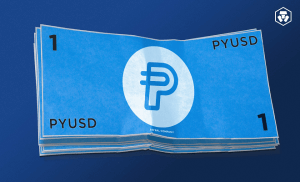MiCA at Glance: Roadmap, Asset Scope, Penalties & Industry Insights
The Markets in Crypto-Assets Act, commonly known as MiCA, represents a pivotal moment in the European Union’s approach to cryptocurrency regulation. MiCA introduces a regulatory framework for crypto businesses within the EU. It aims to establish a harmonized set of rules, providing clarity and consistency for industry stakeholders.

This article aims to provide an in-depth analysis of the newly effective MiCA Act, focusing on its critical components and the implications for the crypto businesses and regulatory environment.
MiCA Timeline: Key Dates and Roadmap
On October 10, 2022, a major step was taken in blockchain-related asset regulation when the Economic and Monetary Affairs Committee of the European Commission cast an overwhelming vote (28 to one) in favor of MiCA. This decisive action set the stage for a subsequent vote by the full European Parliament before the end of 2022.
On April 20, 2023, the European Parliament cast a decisive vote, paving the way for the Act’s ratification by the Economic and Financial Affairs Council of the EU on May 16, 2023.
June 2023 marked a turning point as the regulation officially became law, though not without prior engagement from the public through three consultation packages.
By June 2024, marking 20 days post-acceptance plus 12 months, the European Securities and Markets Authority (ESMA), in collaboration with the European Banking Authority (EBA), is expected to have formulated a draft Delegated Acts.
By December 2024, 20 days post-acceptance plus 18 months, all remaining MiCA rules are projected to be operational and the entire framework will be actively regulating crypto-business activities within the European Union.
MiCA Scope
In terms of asset applicability, MiCA addresses various categories of crypto instruments, with a focus on their value mechanisms and associated risks. Here’s a breakdown of the covered assets and exclusions:
- E-Money Tokens: Primarily used in transactions, EMTs maintain stability by being pegged to a single government-issued currency, functioning similarly to digital versions of legal tender.
- Utility Tokens: These tokens give holders access to features of a decentralized application or specific services within a Distributed Ledger Technology (DLT) system. While they are not classified as financial instruments under most securities laws, MiCA acknowledges their existence and relevance.
- Asset-Referenced Tokens: ARTs are unique for their stable value, achieved by linking to a diverse basket of assets. These may include fiat currencies, commodities, or other digital currencies. Their varied backing sets them apart.
MiCA also outlines specific crypto assets that are beyond its regulatory scope:
- Decentralized Assets: Crypto assets without an identifiable issuer are not specifically covered under MiCA, although service providers dealing with these assets are regulated.
- Specific Entities and Transactions: Transactions within corporate groups or by entities like the IMF and the Bank for International Settlements are exempt, given their low financial risk.
- Central Bank-Backed Currencies: Digital currencies issued by central banks or public authorities, along with related services, are outside MiCA’s purview.
- Excluded Asset Types: Financial instruments, deposits, funds (excluding EMTs), securitization positions, insurance products, pension products, and social security schemes are not covered by MiCA.
Stablecoins, DeFi, and NFTs Treatment
Under MiCA, stablecoins are categorized either as ‘e-money tokens’ (EMTs), if pegged to a fiat currency, or ‘asset-referenced tokens’ (ARTs) for other types of backing. The regulation introduces scaling constraints based on usage. Specifically, stablecoins not pegged to an EU currency face restrictions: they will be banned from exceeding 1 million transactions per day. Additionally, the rules cover Terra-style algorithmic stablecoins, which rely on automated coding to maintain value.
Meanwhile, MiCA regulation will include NFTs only when their characteristics align closely with those of assets explicitly covered by MiCA. For instance, an NFT resembling a utility token or a financial instrument could fall under MiCA’s purview. A key consideration in NFTs’ legal design under MiCA is that mere uniqueness, indicated by a unique identifier, does not automatically confer non-fungibility. Interestingly, MiCA may classify non-fungible tokens issued in large series as fungible, necessitating authorization.
Regarding Decentralized Finance (DeFi) applications, MiCA’s reach has its limits. Since DeFi applications or dApps, operate autonomously without intermediaries, MiCA does not apply to them.
MiCA Key Aspects
MiCA framework establishes key guidelines for crypto businesses, encompassing a range of crucial aspects from authorization to environmental impact. Here’s a closer look:
- To operate in the EU, crypto asset service providers must be legally established within an EU member state and obtain authorization from that state’s competent authority. Additionally, at least one director of the entity must reside in the EU.
- Issuers of crypto assets are required to provide an extensive “Whitepaper” detailing the nature, functionality, and risks of the crypto assets, information about the issuer, project goals, and the technology used. This document must also clearly outline the rights and obligations associated with the crypto assets while avoiding unrealistic risk scenarios.
- MiCA places a greater focus on the environmental impact of crypto transactions, particularly the consensus mechanisms used for transaction validation. Companies are encouraged to adopt eco-friendly algorithms, and climate or environmental impacts must be disclosed.
- The regulation promotes global regulatory convergence through participation in international bodies like the Financial Stability Board and the Financial Action Task Force.
- Non-compliance with MiCA can lead to substantial financial penalties. These include administrative fines (up to €700,000 for individuals and €5,000,000 for legal entities), periodic penalty payments (based on a percentage of average daily turnover or income), and supervisory fees charged by the EBA for issuers of ARTs and EMTs.
The Good, the Bad, and the Ugly for Crypto Businesses
The MiCA regulation, while establishing a framework for stability and credibility in the crypto market, also presents challenges, particularly for smaller entities. Here’s a brief look at the benefits and drawbacks it brings to EU businesses:
- MiCA provides a uniform regulatory framework across the EU, offering predictability and stability for companies expanding across different EU countries.
- By protecting investors, MiCA boosts the credibility of crypto businesses, enhancing trust among customers and investors.
- Clear regulations make the crypto market more attractive to traditional financial institutions, potentially leading to increased investment.
- A regulated environment discourages fraudulent activities, creating a more stable market.
- Adhering to comprehensive regulations may require extensive resources, which can be challenging for smaller businesses.
- The regulation’s transparency requirements might conflict with the crypto community’s ethos of privacy.
- Limitations on stablecoins not pegged to EU currencies could impede innovative projects.
- The application of MiCA outside the EU remains uncertain, potentially complicating international operations.
- Ambiguities in how certain assets, like NFTs, are treated under MiCA could lead to legal uncertainties.
Industry Insights
Shawn Carpenter, StockAlarm CEO and Co-founder of YCharts, a financial analytics and investment research, describes MiCA regulation as “the EU’s attempt to bring some order to the wild, rollercoaster world of cryptocurrencies.”
He likens MiCA to a new sheriff aiming to standardize the approach to cryptocurrencies across Europe. However, he also questions its full efficacy, asking, “But can it completely tame this unpredictable market?”
Carpenter acknowledges MiCA’s dual nature, noting it brings clarity to the crypto world but also presents substantial compliance hurdles. He points out that while it offers clear guidelines, “The rules are strict,” which has led some major players to retreat from EU markets. This, he suggests, could disproportionately affect smaller companies, which might find the new rules overwhelming.
Discussing the EU’s approach, Carpenter observes that while MiCA provides a uniform framework, individual states still have leeway to be creative. He cites Spain as an example, noting that some countries might implement the rules faster to attract crypto businesses, potentially offering incentives like tax breaks.
A significant focus of MiCA, according to Carpenter, is on stablecoins. He highlights the regulation’s emphasis on making them “toe the line,” especially in terms of reserve requirements and transparency. This could enhance their reliability but also increase operational burdens.
On MiCA’s global impact, Carpenter suggests that its influence will extend beyond Europe, stating, “Even though MiCA is an EU thing, it will make waves worldwide.” He anticipates that the regulation might serve as a model for other countries and affect how crypto companies operate globally.
Lars Holst, Founder and CEO of GCEX, also weighed in on the EU’s Markets in Crypto-Assets (MiCA) regulation, firmly believing it will transform the cryptocurrency landscape.
He asserts, “MiCA is positioned to bring in a new era of regulatory maturity in the crypto space, bringing an end to the Wild West days.” Holst emphasizes MiCA’s potential to distinguish between credible and questionable entities, thereby nurturing a framework that “encourages responsible behaviour” and “safeguards investors and users.”

On the topic of legal certainty and compliance, Holst acknowledges MiCA’s role in providing clarity, yet points out that it is “only the beginning,” especially in the dynamic DeFi space. He views the stringent compliance rules positively, especially for firms familiar with regulatory demands, like GCEX.
Discussing EU states’ approaches to attracting crypto business, Holst notes that countries like Spain, which expedited MiCA implementation, indicate a trend. He predicts that “certain countries will naturally emerge as leaders,” with some adopting a lenient stance to spur innovation and others choosing rigorous paths to ensure stringent compliance.
Regarding MiCA’s focus on stablecoins, Holst sees this as a crucial development, stating that “MiCA’s attention to them aligns with the evolving needs of the crypto ecosystem.” He anticipates a gradual shift in transactions towards stablecoins, enhanced by increased trust among market participants.
Finally, on MiCA’s international influence, Holst is convinced of its far-reaching impact. He predicts that MiCA will “be used as a benchmark for other jurisdictions’ regulatory frameworks,” thereby contributing to the global harmonization and legitimacy of digital assets.
Remonda Z. Kirketerp-Møller, Founder & CEO of Regtech Muinmos, shared with FinanceFeeds her insights on the impact of the Markets in Crypto-Assets regulation in the EU.
She views MiCA as an essential, albeit initial, step towards regulating digital assets in the EU, stating, “MiCA is the first attempt to create a regulatory framework for digital assets in the European Union (EU).” While not entirely ending the ‘Crypto Wild West,’ she believes it will certainly introduce more order, especially by empowering ESMA to enforce investor protection principles.
On the subject of compliance, Kirketerp-Møller acknowledges that “Without doubt it introduces tougher compliance rules,” especially regarding investor protection, which were previously non-existent. This shift, she explains, will necessitate a European license for crypto firms to operate in Europe, a change that has prompted firms like Binance to reconsider their EU operations.
On competition among EU states to attract crypto business, Kirketerp-Møller sees MiCA as a catalyst for attracting businesses that seek to operate legitimately within a clear legislative framework. She explains, “The EU under MiCA will attract crypto businesses that actually want to operate in a legitimate and ordered manner under a clear legislative framework.”
Kirketerp-Møller also touched on MiCA’s global impact, comparing it to legislation in the UK and the US. She underscores the necessity for international coordination to avoid regulatory disparities. She warns, “Unfortunately, tighter regulation in the EU as compared to third countries will have adverse effects on the development of crypto assets markets.” However, she also sees benefits in setting higher standards and believes it will be challenging for non-regulated EU and third-country firms to engage EU clients without facing repercussions.
Kate Rhodes, Senior Counsel of Regulatory Policy and Government Affairs at Paysafe, shares insightful perspectives on the Markets in Crypto Assets (MiCA) regulation:
Regarding the potential end to the crypto Wild West, Rhodes states, “When an industry moves from deregulated to regulated, there is often a major impact on the landscape – and this will be no different with the Markets in Crypto Assets (MiCA) regulation.” She anticipates significant changes, acknowledging that compliance with regulations can be costly and may lead to the acquisition or exclusion of smaller market participants. While recognizing that regulatory frameworks may not eliminate all bad actors, Rhodes expects a change in the market dynamic, making it more difficult for non-compliant entities to operate.
On legal certainty and compliance, Rhodes notes, “MiCA is one of the first pieces of regulation in this sector,” highlighting its role in providing a clear taxonomy and distinguishing between asset-backed referenced tokens and stablecoins. She suggests that this clarity may lead to increased institutional activity in the EU, driven by greater market certainty, legal clarity, and reduced regulatory fragmentation. Rhodes emphasizes that the digital assets sector generally supports a regulatory environment promoting consumer protection and a level playing field, which MiCA aims to achieve.
Addressing competition among EU states to attract crypto business, Rhodes points out that MiCA provides a common framework with national discretions. She highlights the importance of following the recommendations of the European Securities and Markets Authority (ESMA) and notes the global race for implementing licensing frameworks. Rhodes also stresses the need for a harmonized approach globally and praises EU member states such as France, Austria, and Ireland for their effective processes and understanding of digital assets.
“For example, many are following the 12-month transition period. What will be key is whether there are simplified authorisation procedures for virtual asset service providers (VASPs) operating under the existing VASP regime. Member states which follow this approach are potentially taking a more commercially attractive one than others,” she added.
The dedicated focus on stablecoins within MiCA is also acknowledged by Rhodes, who suggests that this will have implications for major tokens like Tether’s USDT and Circle’s USDC. However, she does not delve into specific details on the impact.
Lastly, Rhodes discussed the broader implications of MiCA on the job market and industry values. She anticipates a growing demand for compliance, data, and legal professionals, and suggests that issues like ESG and D&I will likely gain importance in the industry, possibly addressed in future iterations of MiCA.
“In the UK, for example, there have been multiple initiatives spearheaded by both the public and private sectors which seek to close, for example, the gender gap. These include EY and Innovate Finance’s 2023 ‘Women in fintech’ report with its recommendations on driving up the number of women in the space, and the UK government’s championing of schemes such as the Women in Finance Charter,” she concludes.









